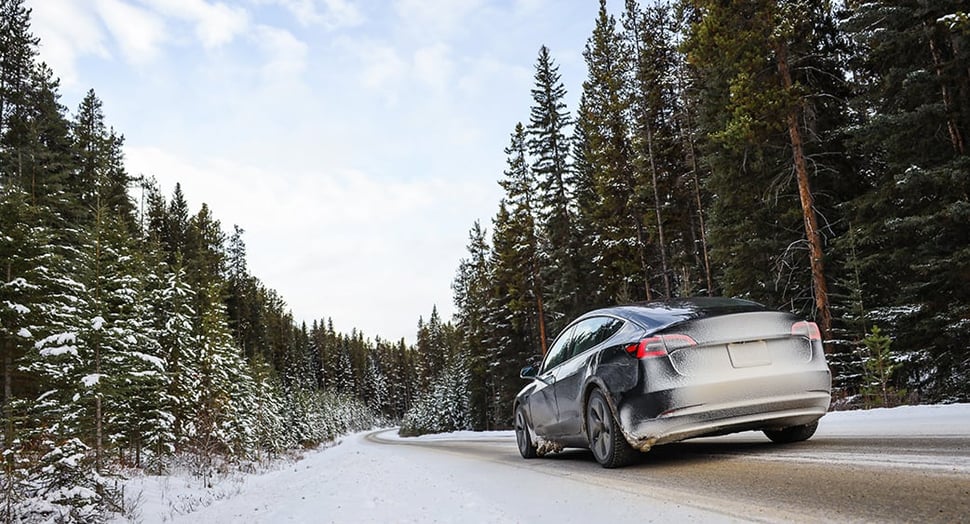 Winter weather impacts the way we drive, but it also affects our vehicles. Here are tips to help you prepare your EV for a cold winter.
Winter weather impacts the way we drive, but it also affects our vehicles. Here are tips to help you prepare your EV for a cold winter.
With winter rearing down on most of the country, now’s the time to take the necessary steps to winterize your electrical vehicle (EV). Whether you’ve been driving an EV for years or are a first-time buyer, there are several crucial steps to take before the freezing rain and blustery snow arrives.
Even though winter preparation primarily impacts drivers in colder regions, EV owners in warmer climates should also think about implementing some of these precautions just to be on the safe side. These tips also go above and beyond the normal winterization steps for every vehicle, such as installing winter wipers, loading up on ice scrapers, getting the vehicle system checked and more.
How does cold weather impact an EV?
Before moving into the top tips list, it’s good to know just how cold weather impacts your EV and why it’s necessary to winterize it.
When the temperature drops below 40 degrees, an electric car’s battery produces less current. If the battery isn’t charged sufficiently, it can nearly become completely drained in a matter of hours if left in cold weather.
When it drops below 20 degrees, it can put a significant dent in the EV’s range. Driving and using the car’s heating system at or below this temperature decreases the average driving range of an EV by 41%, according to AAA. This means it’s absolutely imperative for drivers living in colder regions to take the necessary safeguards during winter.
Consider these 6 tips for winterizing your EV:
1. Charge Smartly
Be sure to think ahead and plan out when you’ll need the most charge for your car.
If you need to leave early for work and it’s going to be below 40 degrees overnight, set the overnight charge so that it finishes as close to when you need to leave as possible as opposed to charging it the night before.
2. Precondition
Before heading out in the cold weather, turn on the heat around 30 minutes early, while the car is still plugged in. This warms up the battery so it keeps a better charge, and helps maximize the car’s driving range. But this needs to be done while the car is still charging to ensure no additional energy is used from the battery to warm up the car.
Most electric cars have an app you can use to precondition on command or via a pre-set schedule.
3. Heat the Seats
Since EVs do not have a gas-fueled engine, there’s no additional waste heat to help warm the car’s cabin as opposed to traditional vehicles.
A good way to get around this is to precondition the cabin (as noted above), then, when it’s time to start driving, lower the cabin heater and instead use the heated seats and steering wheel. This maintains a more efficient battery and consumes less electricity than heating the entire cabin.
4. Use a Garage, When Possible
Sure, sometimes it can be more convenient to park in the driveway or in the street. And, sure, sometimes there’s a bit more clutter in the garage than there needs to be.
But for EV drivers who have a garage, keeping the vehicle inside during winter can be a major difference maker. The relative warmth of the garage will help keep the battery charged longer. Further, a battery left in the cold weather too long won’t perform as well as one kept in warmer air.
This also applies to indoor parking facilities at shopping centers, sporting events and any other opportunity where you have the option to park indoors rather than outdoors.
5. Check Your Tires Regularly
This tip applies to all vehicles that use inflated tires, but EVs can be impacted more by low tire pressure.
Every 10-degree dip in the ambient temperature can decrease tire pressure by one pound per square inch (PSI). The colder it gets, the lower your tire’s PSI becomes.
A recent study from ExxonMobil showed in order for EVs to maximize the full potential of its battery range, it’s crucial to maintain optimal air pressure. The proper pressure can increase the vehicle’s energy efficiency by 3% to 7%.
6. Employ Eco Mode
The eco mode for each EV varies, but they all accomplish a similar goal of boosting mileage through reduced power consumption by limiting the energy supply to the drive motor and cabin heaters. This can help maximize the battery efficiency during cold weather.
Plus, most EVs accelerate slightly slower in eco mode, since power is reduced to the motor. This can make your driving safer by limiting the chances of wheel spins on ice- or snow-covered roads.
Want to learn more EV tips and how to set up and install a home-charging station for these winter months? Reach out to the electromobility pros at Webasto today.

